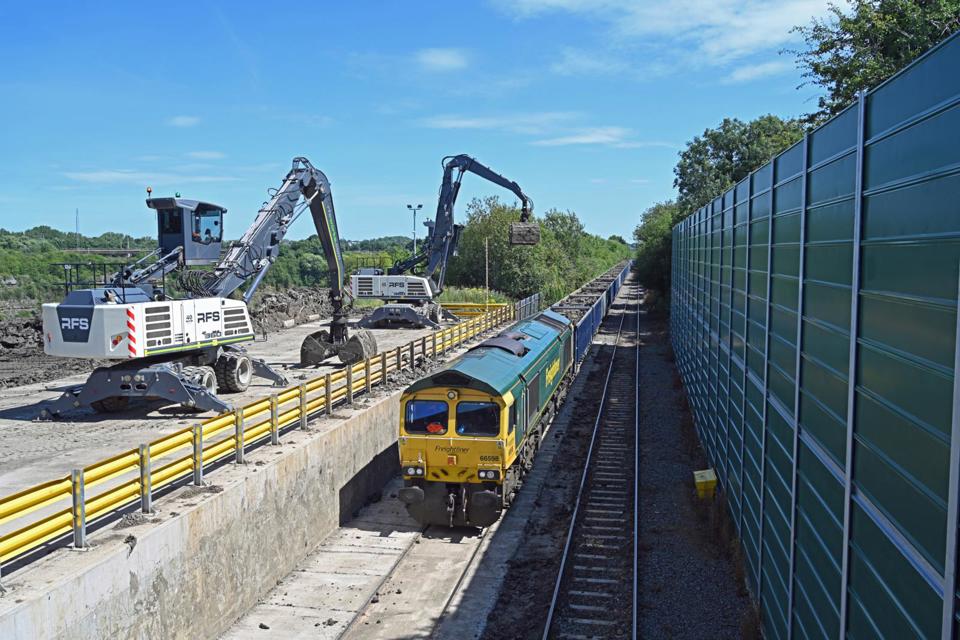The Rail Freight Group held its 32nd annual conference on September 26 with many of the industry’s leading voices delivering talks.
Guy Bates Head of Freight Development at Network Rail painted a positive picture of freight’s future but did also warn that the freight industry was having to run to stand still in its current climate. Speaking at the conference, Bates said, “We have a growth target for Control Period 7 (CP7) of 8%. That’s 25 additional trains in circulation we need to achieve over this period. But we need to make up for the fact that by the end of Control Period 6, the material suppliers for HS2 would have tailed off and that will need to be replaced, and other trains could go.
“So, in many ways, we need to run, to stand still.”
Bates did highlight that the freight industry will still be benefitting from investment in the network from the last two control periods in CP7 and beyond, although did admit that there wasn’t much in the way of public money to be spent currently. This lack of funding was highlighted by Andrea Pearson, Deputy Director International Rail and Rail Freight at the Department for Transport.
Pearson said that the department had to “fight with the treasury to get the new freight track access charges scheme signed off.” Pearson estimated that the scheme will cost the treasury £5 million over the scheme’s lifetime and also said that “it was a battle to be heard”.
But she did also reiterate that the government had ambitions for rail freight that would be reinforced in the upcoming Rail Reform Bill. Pearson added that it would have a very specific convention for rail freight and a ‘duty’ for Great British Railways to promote it. However, any new legislation is unlikely to have a growth target attached to it similar to the previous governments.
“The reason for that is because we are hoping that this bill will live for 40 or 50 years like the last one did, so it doesn’t make sense to put a percentage number on the face of it, however I wouldn’t want you reading anything into that.”
John Larkinson, Chief Executive, Office of Rail and Road, said in his speech that ORR was holding Network Rail to account for the 8% growth target for this control period, but acknowledged that a lot of what happens to grow freight is out of Network Rail’s control and dependent on the private companies.
There was optimism for growth markets, however. Express parcel delivery and new energy opportunities such as biomass, hydrogen and carbon capture were highlighted by many as potential areas of growth.
However, Freightliner Chief Executive Officer Tim Shoveller said that there needed to be a general acceptance that road was cheaper than rail. Highlighting his point, Shoveller said that the newly launched route from Tilbury to Manchester was running 21 containers at night, which would mean the service will be losing money. “If you think about it, its cheaper to run 21 lorries from Tilbury to Manchester than one train.”, he added.
Shoveller did add that the ambition was to grow the volume from 21 containers to 35 in six months’ time but unless that was achieved, the service would likely stop.
Whilst there remained optimism, capacity on the lines is still a concern to Shoveller, who said that it was “unacceptable” to pitch passenger services against freight in the fight for access.
“We can’t credibly argue that passengers should lose. Passengers do currently stand on platforms at Edinburgh and stand on overcrowded trains so we need to fix that, but it cannot be at the expense of rail freight growth and capacity, just because we want to run more trains on the East Coast Main Line.”


















Login to comment
Comments
No comments have been made yet.